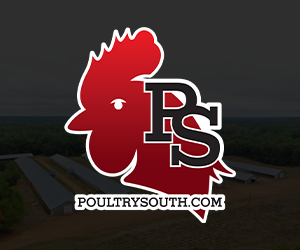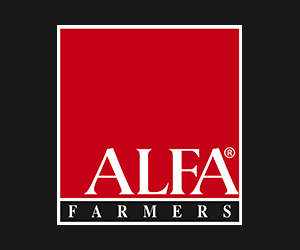From Our Blog
The Land Show Episode 175
The Land Show
February 16th, 2019
This week on The Land Show.
- Rick Bourne, of Southeastern Land Group, joins the guys to recap this past deer hunting season in Alabama. http://www.selandgroup.com/agents/rick-bourne
- Steve Talley, owner of Talley’s Fruit Farm, updates us on how fruit trees and produce weathered this past winter.
- Liz Chambers, Director of Administration for the Alabama Forestry Association, shares about some of the great things happening at the Association in 2019. www.alaforestry.org
- Randall Upchurch shares about some of the good work they are doing to help people purchase or sell poultry farms through Poultry South. www.poultrysouth.com
- John Morris talks about the demand for small acreage properties and mini-farms around Shelby County and Birmingham. www.selandgroup.com/agents/john-morris
- Tim Baker shares some tips for finding arrowheads and artifacts in our Outdoor Update. www.selandgroup.com/agents/tim-baker
Episode 175 Video Introduction
Transcription
Here is the transcription of this week’s first segment.
Dave Milton: Hey, everybody. Welcome to The Land Show with Dave and Johnny. I tell you, it’s a beautiful Saturday morning. It’s been kind of hit-or-miss with the rain, but I tell you, Johnny B. It’s been a great deer season this year. Deer season’s over. We had a great time. I hope you had a great deer season.
Jonathan Goode: Oh, very satisfying season, man. It was exciting for my oldest son to kill his first deer and to get interested in it this year, and I tell you, it was a great season. I’m glad to have it in the rear view mirror, it’s good to get back to work in the springtime, helping folks buy and sell land.
Rick Bourne Wrapping up Deer Season
Dave Milton: Look at who just wandered in the studio here.
Jonathan Goode: Mr. Big Buck himself, here.
Dave Milton: I’ll tell you what, man. He’s the Butler County legend, Rick Bourne. What’s going on, Rick?
Rick Bourne: Thanks for having me, guys. Not much.
Jonathan Goode: Well, did you get to do much deer hunting this season?
Rick Bourne: You know, I didn’t get to do a whole lot. When you have a 4-year-old and a 2-year-old that kind of hampers your deer season, but I did enjoy talking about it and actually let some, took some guys deer hunting this year, and let some guys kill some deer. And helped with that, so that’s always fun to me. You know, at this point in my life, I think I get more joy out of a kid killing a deer than me-
Jonathan Goode: Oh, for sure.
Rick Bourne: So that’s what I enjoy the most.
Jonathan Goode: Yeah, it was fun when my son shot his deer. I don’t think he could understand how or why I was so excited, but I was patting him on the back and bumping him … And he’s like, “Dad, it’s just another thing, man.” But it’s fun. It is fun when you are out there with somebody that does that for the first time.
Dave Milton: Yeah, I tell you, and the thing, Jonathan, that I’m seeing is more big trophy high-scoring deer all over the state. When I was a kid, that was pretty much the purview of the Black Belt. Which, the Black Belt’s still a great place to go and tons of deer and legendary. But big deer are being killed all over Alabama. It’s really incredible. My part of the state, east central Alabama, just had some incredible deer killed. A friend of mine killed 160-inch deer in Chambers County, which is unheard of. Lee Gant, that works with us, killed a big deer in Chambers County, and we killed, my brother killed a big nice 10-point in Randolph County. So counties that traditionally haven’t produced those type of deer are really starting to produce, and I think a lot of it has to do with hunters being more educated, you know, people laying off, more people are managing, more young people are managing, and then probably the 3-buck rule has helped, also.
Jonathan Goode: Well, it has definitely been good. Rick had a picture of a really fine deer that was taken in Greenville this past week, just on an adjacent property to a place we’ve got for sale. It was-
Rick Bourne: Yeah, that was a friend of mine’s son, Nate Barrow, 15 years old, man. And he’s a, I was kidding with him the other day. I was kidding with his dad, saying he’s 15 and he’s killed something way bigger than I’ve ever seen in the woods. So yeah, I love to see the kids kill the deer, and that was a good deer. I don’t know what he’s going to score, but right on the edge of Greenville right there, just a really nice deer. Several guys had him on camera or were hunting him, and I was very happy to see that Nate got him. It was a good deal.
Jonathan Goode: Well, I know a lot of wildlife management folks, and then a lot of landowners that are serious about intensively managing their property are running camera surveys right now, they’re trying to find out what survived the season, what’s going to make it to the next season, and I guess within the next few weeks here, three or four weeks, a lot of these deer are going to be dropping their antlers, and so they’re trying to get cameras out as quick as they can, just so they can see what those actual racks look like, and we had a showing this week on White Oak Valley Plantation there in Chilton County, and it was really neat to see some of those sheds. I mean, some of the native deer and some of the deer in the fence. I mean, it’s just really cool what you can do with good time, habitat, and nutrition.
Rick Bourne: Were those deer dropping their sheds?
Jonathan Goode: Some of them had, yeah. And then there was one stud buck that was still running around and breeding with does. But yeah, it’s neat. So some of them were already dropping and then some of them still had their antlers. But, you know, Rick, I guess getting geared up for dove season, that’s always your big thing. You love to do the winged shooting. Are you doing anything for winged shooting right now?
Rick Bourne: Nope. We’re just getting prepared. We just, I just, me personally, bush-hogged my whole dove field, got it down, basically just preparing it. In April when we start planting corn; a little less work come April. So we’re getting some stuff prepared. We’ve got winter wheat planted. Of course, we did that several months ago, and it’s starting to come up pretty good, but we’re looking forward to it, and getting all the equipment greased up and the tractors fueled up and getting ready to go come spring.
Dave Milton: Rick, you know, I’ve noticed down in your part of the world with this wet weather and through our timber sales division, Brian Watts, Jesse Thompson, the timber prices really seem to be coming up, you know, and it seems like the market’s really improving. Is that what you’re seeing?
Rick Bourne: Yeah, that’s what I’m seeing across the board. There’s, you know, the supply is down at the mills, which obviously usually makes the price come up. And a lot of people, if you’ve got a good tract of ground that’s readily accessible, that’s close to a road that you can get the timber out that can be logged in a wet condition, you can do very well on price right now.
Steve Talley from Talley’s Fruit Farm
Jonathan Goode: Well, Dave, I’m excited. Right now we’re going to go up to North Alabama, talk to a good friend of the show, Steve Talley with Talley’s Fruit Farm up there. Steve, how are you this morning?
Steve Talley: Doing well. Good to be back on with you again.
Jonathan Goode: Yeah, man. Well, we’re happy to have you on in the New Year, and for a lot of our listeners, we’re adding folks every week. You and your farm, tell us what you grow primarily on your family farm.
Steve Talley: So we’re in northeast Alabama in DeKalb County on Sand Mountain, and we grow fruit and vegetables. Our primary fruits are peaches, strawberries, and blackberries, and on vegetables, if it can be grown in Alabama, we grow it. We grow it all.
Jonathan Goode: Well, I know, and you do a great job of going to farmers markets, and I guess for one of the things that I wanted to find out … This seemed like we got cold weather in spurts this past winter, and I know that fruit trees need a certain amount of chill hours. How did we do on chill hours in your part of the state?
Steve Talley: We have all of them that we need already. You know, chill hours is basically just however many hours is between 32 and 45 degrees, and trees need so much of it. And different trees need different amounts. But we have plenty for all of it. We’re already seeing buds swell on all our peach trees. Our plum trees are actually already showing a few blooms, which is a little early for it. But that’s, you know, that’s the way it’s become, so.
Jonathan Goode: Well, I was driving around this week and saw the white blooms of some pears in our part of the world, and I just couldn’t believe that, I mean, we’re in early February. But I guess, I mean, this happens frequently, I guess, doesn’t it?
Steve Talley: Well, we’ve had, for the last two years, this’ll be the third year in a row that we’re going to have peach blooms in February. And we’ve still been able to make a pretty good crop on ’em overall, so … It just makes us worry a little bit.
Jonathan Goode: Right. Well, I guess if the good Lord thins them using a frost, that’s, you know, that’s one way to look at it, but, I mean, historically, we’ll have some frosts on into April, won’t we?
Steve Talley: Usually we’ll have one or two nights in April where we get down in the … In North Alabama, where we’ll get down into the mid-20s, and most of the time, the peaches will survive that. You know, if we get down below 25, then we’re going to be in trouble, but we don’t really worry about the weather in March. The peaches generally make it through that. It’s just that one or two nights in April that we really worry about.
Jonathan Goode: Right. Well, now, tell me about the strawberries. What are you seeing with your berry patch?
Steve Talley: Well, they’re going to be early this year. It’s kind of like the same deal with the peaches. I walked through them yesterday, and I’m already seeing blooms on the strawberries. So probably starting next week. We’ll keep them covered with our frost covers on nights that it’s cold and start trying to push them, and I think we’ll have strawberries by early April this year.
Jonathan Goode: Okay. Now all of your strawberries, are they bedded and on plastic?
Steve Talley: Yes. That’s the only way we try to do it. I think pretty much everybody has went to just doing it on plastic now.
Jonathan Goode: Okay. Well, in our garden, my wife had this idea a few years ago, and I’m hoping she’s not listening, but she wanted me … We live by the National Forest in Perry County, and so she wanted me to try to rake some pine straw up in the area and actually put out straw on the berries. And man, gosh, that was a lot of work, and it was a nightmare.
Dave Milton: Hey, John. Jonathan. I think you’re safe. I don’t think our wives listen to this show much. So I think you’re safe.
Jonathan Goode: Well, I was telling Dave last week, and Steve can appreciate this because Steve’s father’s a minister and Steve’s a minister, so he understands this, but everything that you do and say will be used against you as a sermon illustration and on the radio shows. So our family members are subject to have anything shared on the show. So the strawberries are good, do y’all do u-pick or are you selling them at the stand there or how do you do that?
Steve Talley: We sell them at the house. We don’t do u-pick. It’s just too much trouble for us, being a small farm. But we do, we sell them at the house, and we sell at markets, and we have something new we’re going to be doing with a couple of school systems this year where we’re going to be providing strawberries for the school systems, where the kids will actually eat them with their lunches.
Jonathan Goode: Oh, very cool.
Dave Milton: Oh, good.
Steve Talley: That’s a good program that’s getting started, pretty much statewide. I went to a meeting on it Monday, Tuesday of this week, where we’re really trying to get our produce, fresh produce, into the school system, where the kids can get some good, fresh food.
Dave Milton: That’s a whole let better than the soy burgers and the canned green beans we used to eat, isn’t it, Steve?
Jonathan Goode: And the rectangle pizza and chocolate milk. I love that rectangle pizza, though. It was awesome. Well, Steve, what other things have y’all got going on? I mean, when will you anticipate starting to go to some of the farmers markets in your area?
Steve Talley: Well, our markets, our first ones open up mid-April. Anything we get before then we’ll just sell at the house. And then all of our markets are open by mid-May. Most of them are mid-April. Make sure, you don’t have to come to the market we’re at, but support your farmers all over the state of Alabama. There’s farmers markets everywhere in Alabama. So find ’em and get to ’em.
Jonathan Goode: Well, that sounds like an exciting program to be getting some of the local fresh produce into the schools. And I know people line up to come get your produce at the farmers markets. Which, and you may not have finalized your total list, but which farmers markets are you anticipating providing produce or selling produce this year?
Steve Talley: Ones we know for sure we’ll be in … We added one in Birmingham last year, but know we’re going back to it. There’s the farmers market at Shades Valley, the Shades Valley Presbyterian Church in Birmingham. Then up in the Madison-Huntsville area, we do the Madison City Farmers Market. We do the Latham United Methodist Church farmers market. We do the Winchester Road farmers market and the Huntsville Hospital farmers market.
Jonathan Goode: Okay.
Steve Talley: And then we do some local, around the house, that you know, everybody knows we’re there.
Dave Milton: Hey, Steve. The thing I love, I guess I’m partial, you know. I graduated from high school in Albertville, love Sand Mountain fruits and vegetables and all my kin folks were from up there. But what is it that makes, and you’ll break my heart if you tell me you’re not going to have a lot of tomatoes this year, so I hope you’re going to have a lot. Y’all going to have a lot of tomatoes, I assume?
Steve Talley: We’re going to plant. We’ll probably be in the 15,000 area.
Dave Milton: Wow. Wow. Well, what is it, what is it that just, you know, makes Sand Mountain tomatoes so special? I mean, Sand Mountain tomatoes are legendary. What do you think makes them so special?
Steve Talley: It’s the sandy loam soil. You know, the soil is the key. I believe, and I’ve taste-tested, you know, not just tomatoes but fruits and other things all over the state. And I just believe everything on Sand Mountain is better.
Dave Milton: I hear you, brother.
Jonathan Goode: Opinions of the farmers are not expressly those of the Land Show, but they should be. But I agree. I mean, it is good, and those tomatoes are good. And for folks who have never been around a farm that grows 15,000 tomatoes, that is a lot of work. When I left the farm up there, Steve and I grew up working together on a farm. When I left, I swore that I was done with that, and then I married a woman that wanted to have a nice garden, and so I’m still pounding tomato stakes and stringing tomatoes, Steve. So I get a small dose of it every year, but that’s pretty impressive. Now, your children, everybody’s still around the farm? Are some going to college, or how is that working?
Steve Talley: My oldest daughter’s at Auburn now. That takes a lot of strawberry picking away.
Jonathan Goode: No doubt.
Steve Talley: But I still have three other teenagers that still get a lot of the work done and help me out a lot with a lot of the tomato stake pounding and stringing and the things that my back’s getting too old for.
Jonathan Goode: I understand. Well, the last question is you had added some additional acreage last year. Tell us about the additional acreage you’ve added to your farm and what you’ve done to it since you’ve gotten it.
Steve Talley: We added 40 acres last year and almost immediately we put 15 of it in peach trees. They got some good growth this past year. We’ll be looking a couple more years, we’ll start picking peaches off of those. We’ve got our strawberry plants over there this year. Last fall, we put about 7 acres of pumpkins on that land, and I did real well with that. So we’re going to farm probably 30 of that 40 will be either in those trees or in cultivation this year.
Jonathan Goode: Well, that’s exciting. That is a ton of produce that you can get off of 30 acres, so y’all are turning out a lot. Well, Steve, if somebody wants to keep up with your products as they become available and where you will be, how do they find you?
Steve Talley: Talley’s Fruit Farm on Facebook. We update pretty regularly, and that’s the best place to keep up with us.
Jonathan Goode: And I love seeing the pictures of the strawberries and things as they become ripe and y’all take ’em out. So y’all, please go to Talley’s Fruit Farm. My friend Steve Talley, thank you so much for being on The Land Show today.
Steve Talley: Thank you, Dave and John.
Dave Milton: Thanks.
Jonathan Goode: Always enjoy talking to Steve. It takes me back to my roots there in Morgan County, and every time we talk to Steve, you get fired up about Sand Mountain. I think that’s, it just got in you when you were living up there, Dave.
Dave Milton: Nah, I tell you. I just got a lot of good memories with talking about gardens, with my grandparents. My grandparents never had a big garden, but they had a lot of friends who did. And so I would go, when I was in high school, I’d go pick a lot, and we’d always enjoy the Sand Mountain tomatoes. And there is something special about Sand Mountain. I don’t know what it is. The lime, you know, the lime content in the soil, the sandy loam soil, maybe it’s the elevation. I don’t know what it is. But, you know, the fruits and vegetables from that part of the world are really good.
Jonathan Goode: You know how every good cook has a special ingredient they don’t share? The good Lord put some special ingredients in that Sand Mountain land up there.
Dave Milton: Well, and vine ripe, too. Now, vine ripe tomatoes … Vine ripe anything is just better. I mean, it’s just way better.
Jonathan Goode: And we’ve got some good land brokers with Southeastern Land Group that work up that way. Who are some of our agents that are up there?
Dave Milton: Yeah, Matt Burnett’s kind of on the southern part of Sand Mountain there. He’s kind of where Sand Mountain drops off down into Etowah County just south of Boaz. And then of course Austin Ainsworth is relatively close by. He’s kind of, you know, he’s, he’s sort of the Huntsville to Guntersville area, just west of Sand Mountain. And then Jack Gabriel’s just east of Sand Mountain there. He’s down in Tennessee Valley in Scottsboro. I’m not leaving anybody out, am I?
Jonathan Goode: Nah, that’s one of the neat parts of the state where a 40-acre farm is a good-size farm. That’s an average-
Dave Milton: Yeah, the history of Sand Mountain is interesting. Sand Mountain and the Wiregrass have the exact same history. Both the soils were light and loamy and they were too light to farm before the advent of commercial fertilizer. So they were big wilderness areas, big, Sand Mountain’s a massive plateau. It’s a high elevation plateau. When you’re up on top of Sand Mountain, you feel like you’re on flat ground, but you’re actually on a mountain. You’re on a big plateau. And it’s, you’ve got a line, bedrock, and then the sandy loam soil, and with the advent of commercial fertilizer in the late 1800s, all that land became farmable, and by that time, the population was such that they were, in essence, people were claiming 40s and 80s and not sections. Like they were in antebellum times, and so the people on the Wiregrass, the people on Sand Mountain, are very similar because they kind of came from the same stock.
Jonathan Goode: Right. Well, it is a beautiful area, and if you’ve not been to that part of the state, you definitely need to go up there toward Oneonta and that part of the state, Boaz.
Dave Milton: It’s a big area. I mean, Sand Mountain starts at Oneonta and it goes all the way into Tennessee. You know, it goes all the way up into Tennessee. It’s a big, broad area, and kind of Appalachian culture, and you know, you really feel like you’re more in Tennessee in certain ways when you’re up there.
Jonathan Goode: And time it to go by my friend Steve Talley’s fruit farm up there and check that out. Y’all stay with us. We’re going to take a quick break. We’ll be back for more of The Land Show with Dave and Johnny.





